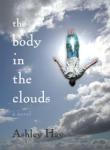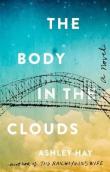AustLit
Latest Issues
AbstractHistoryArchive Description
'What if you looked up at just the right moment and saw - out of the corner of your eye - something unexpected? What if it was something so marvellous, so extraordinary, that it transformed time and space forever? The Body in the Clouds tells the story of one extraordinary moment - a man falling from the sky, and surviving - and of three men who see it, in different ways and different times, as they stand on the same piece of land. An astronomer in the late 1700s, a bridgeworker in the 1930s, an expatriate banker returning home in the early 21st century: all three are transformed by one magical event. All are searching for the same thing: how to understand what it means to call a place home, and how be able to tell when you get there.
The Body in the Clouds is a luminous novel about the power of story: the stories that define who and where we are. And the stories we tell - and have told, and will tell - for the people we love.' (From the publisher's website.)
Notes
-
Dedication: For Les and Marilyn Hay
-
Epigraph: ...In Breughel's Icarus, for instance: how everything turns away
Quite leisurely
...the sun shone
As it had to on the white legs disappearing into the green
Water; and the expensive delicate ship that must have seen
Something amazing, a boy falling out of the sky,
Had somewhere to get to and sailed calmly on.
-W.H. Auden, 'Musee des Beaux Arts'
...That they have some idea of a future state appears from their belief in spirits, and from saying that the bones of the dead are in the graves, but the body in the clouds: and the question has been asked, do the white men go tither?Governor Arthur Phillip to Lord Sydney, 13 February 1790
Publication Details of Only Known VersionEarliest 2 Known Versions of
Other Formats
- Sound recording.
- Large print.
Works about this Work
-
The Sydney Language : William Dawes in Australian Literature
2014
single work
criticism
— Appears in: New Scholar , vol. 3 no. 2 2014; 'Familiar images of Sydney, displaying its sparkling harbour, opera house and bridge, belie the darkness of its short history. For Delia Falconer, in her recent ‘biography’ of Sydney, the city’s ‘fundamental temperament is melancholy’ (2). Over two hundred years of European settlement have brought countless tales of grim encounters in quiet alleys, graves found in the bush, bodies bobbing to the surface of rivers. And there is an older shock, hidden in the landscape, the sudden, calamitous arrival of an alien civilisation. ' (Author's introduction) -
The Sydney Harbour Bridge : From Modernity to Post-Modernity in Australian Fiction
2012
single work
criticism
— Appears in: JASAL , vol. 12 no. 1 2012; 'This paper considers a recent spate of novels that deal in various ways with the construction of the Sydney Harbour Bridge. These include Peter Corris's Wet Graves; Alex Miller's Conditions of Faith; Vicki Hastrich's ; and Sarah Hay's The Body in the Clouds. It is argued that these novels, written so long after the bridge's completion, are each grappling with the transformation of this icon of Australian modernism into the significant component in the nation's foremost experience of postmodern urban space - Circular Quay.' (Author's abstract)
-
The Silver Age of Fiction
2011
single work
criticism
— Appears in: Meanjin , Summer vol. 70 no. 4 2011; (p. 110-115)‘In human reckoning, Golden Ages are always already in the past. The Greek poet Hesiod, in Works and Days, posited Five Ages of Mankind: Golden, Silver, Bronze, Heroic and Iron (Ovid made do with four). Writing in the Romantic period, Thomas Love Peacock (author of such now almost forgotten novels as Nightmare Abbey, 1818) defined The Four Ages of Poetry (1820) in which their order was Iron, Gold, Silver and Bronze. To the Golden Age, in their archaic greatness, belonged Homer and Aeschylus. The Silver Age, following it, was less original, but nevertheless 'the age of civilised life'. The main issue of Peacock's thesis was the famous response that he elicited from his friend Shelley - Defence of Poetry (1821).’ (Publication abstract)
-
Quills Celebrate Harbour Home
2011
single work
column
— Appears in: The Australian , 16 May 2011; (p. 3) -
Painting with Your Pen
2011
single work
column
— Appears in: Writing Queensland , December 2010 - January 2011 no. 201 2011; (p. 12)
-
Bridge Across the Years
2010
single work
review
— Appears in: The Canberra Times , 4 September 2010; (p. 21)
— Review of The Body in the Clouds 2010 single work novel -
Untitled
2010
single work
review
— Appears in: The Courier-Mail , 4 -5 September 2010; (p. 24)
— Review of The Body in the Clouds 2010 single work novel -
Parallax
2010
single work
review
— Appears in: Australian Book Review , September no. 324 2010; (p. 38)
— Review of The Body in the Clouds 2010 single work novel -
Tall Tales, Truth and the Bridge Between
2010
single work
review
— Appears in: The Weekend Australian , 11-12 September 2010; (p. 21)
— Review of The Body in the Clouds 2010 single work novel -
Books
2010
single work
review
— Appears in: The West Australian , 11 September 2010; (p. 20)
— Review of The Body in the Clouds 2010 single work novel ; Storymen 2009 single work life story -
Painting with Your Pen
2011
single work
column
— Appears in: Writing Queensland , December 2010 - January 2011 no. 201 2011; (p. 12) -
Quills Celebrate Harbour Home
2011
single work
column
— Appears in: The Australian , 16 May 2011; (p. 3) -
The Silver Age of Fiction
2011
single work
criticism
— Appears in: Meanjin , Summer vol. 70 no. 4 2011; (p. 110-115)‘In human reckoning, Golden Ages are always already in the past. The Greek poet Hesiod, in Works and Days, posited Five Ages of Mankind: Golden, Silver, Bronze, Heroic and Iron (Ovid made do with four). Writing in the Romantic period, Thomas Love Peacock (author of such now almost forgotten novels as Nightmare Abbey, 1818) defined The Four Ages of Poetry (1820) in which their order was Iron, Gold, Silver and Bronze. To the Golden Age, in their archaic greatness, belonged Homer and Aeschylus. The Silver Age, following it, was less original, but nevertheless 'the age of civilised life'. The main issue of Peacock's thesis was the famous response that he elicited from his friend Shelley - Defence of Poetry (1821).’ (Publication abstract)
-
The Sydney Harbour Bridge : From Modernity to Post-Modernity in Australian Fiction
2012
single work
criticism
— Appears in: JASAL , vol. 12 no. 1 2012; 'This paper considers a recent spate of novels that deal in various ways with the construction of the Sydney Harbour Bridge. These include Peter Corris's Wet Graves; Alex Miller's Conditions of Faith; Vicki Hastrich's ; and Sarah Hay's The Body in the Clouds. It is argued that these novels, written so long after the bridge's completion, are each grappling with the transformation of this icon of Australian modernism into the significant component in the nation's foremost experience of postmodern urban space - Circular Quay.' (Author's abstract)
-
The Sydney Language : William Dawes in Australian Literature
2014
single work
criticism
— Appears in: New Scholar , vol. 3 no. 2 2014; 'Familiar images of Sydney, displaying its sparkling harbour, opera house and bridge, belie the darkness of its short history. For Delia Falconer, in her recent ‘biography’ of Sydney, the city’s ‘fundamental temperament is melancholy’ (2). Over two hundred years of European settlement have brought countless tales of grim encounters in quiet alleys, graves found in the bush, bodies bobbing to the surface of rivers. And there is an older shock, hidden in the landscape, the sudden, calamitous arrival of an alien civilisation. ' (Author's introduction)
Awards
- 2012 longlisted International IMPAC Dublin Literary Award
- 2011 shortlisted New South Wales Premier's Literary Awards — UTS Award for New Writing
- 2011 shortlisted South East Asia and South Pacific Region — Best First Book
- 2010 shortlisted Western Australian Premier's Book Awards — Fiction
- Sydney Harbour Bridge, Sydney Harbour, Sydney, New South Wales,
- 1788-1791
- 1930s
- 2000-2099





